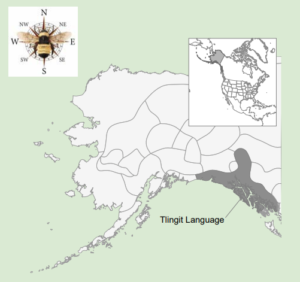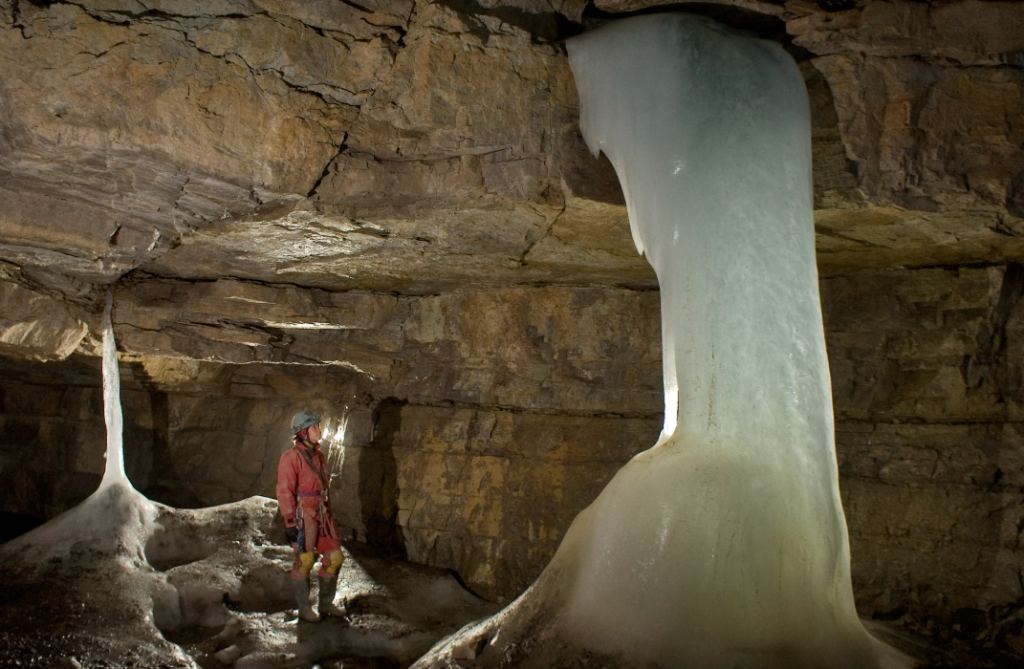The Whole Kit and Kaboodle: Exploring the Relationship Between Land Otters, Tlingit People, and Kit’n’Kaboodle Cave

Kit’n’Kaboodle Cave was rediscovered in 1992 by a team from the USDA Forest Service. This cave and others in this area contain remains that interest many different types of scientists. For example, paleontologists, biologists, and archaeologists all have interest in the remains left in these caves. Since 1993, the Tongass National Forest has supported interdisciplinary research to document the caves and the resources they contain.
The scientist in this study was interested in learning about whether the Kit’n’Kaboodle site was occupied by land otters at times when people were not present. The scientist also wanted to know if the shells and animal bones left by people differ from the shells and animal bones left by land otters. Additionally, the scientist studied whether land otter behavior affected the beliefs of Tlingit people about the land otter.

-
 In this FACTivity, you will think about how you live and what artifacts you would like an archaeologist to find one day to help explain the time period you live...
In this FACTivity, you will think about how you live and what artifacts you would like an archaeologist to find one day to help explain the time period you live...FACTivity – The Whole Kit and Kaboodle
In this FACTivity, you will think about how you live and what artifacts you would like an archaeologist to find one day to help explain the time period you live...
Glossary
View All Glossary-

Madonna Moss
One of my favorite science experiences was when I worked at the archaeological site of Nunalleq in 2015. At Nanalleq, wood artifact preservation is fantastic. As I was digging, I...View Profile
Standards addressed in this Article:
Social Studies Standards
- Culture
- People, Places, and Environments
- Science, Technology, and Society
- Time, Continuity, and Change
Note To Educators
The Forest Service's Mission
The Forest Service’s mission is to sustain the health, diversity, and productivity of the Nation’s forests and grasslands to meet the needs of present and future generations. For more than 100 years, our motto has been “caring for the land and serving people.” The Forest Service, an agency of the U.S. Department of Agriculture (USDA), recognizes its responsibility to be engaged in efforts to connect youth to nature and to promote the development of science-based conservation education programs and materials nationwide.

What Is the Natural Inquirer?
Natural Inquirer is a science education resource journal to be used by students in grade 6 and up. Natural Inquirer contains articles describing environmental and natural resource research conducted by Forest Service scientists and their cooperators. These scientific journal articles have been reformatted to meet the needs of middle school students. The articles are easy to understand, are aesthetically pleasing to the eye, contain glossaries, and include hands-on activities. The goal of Natural Inquirer is to stimulate critical reading and thinking about scientific inquiry and investigation while teaching about ecology, the natural environment, and natural resources.

-
Meet the Scientists
Introduces students to the scientists who did the research. This section may be used in a discussion about careers in science.
-
What Kinds of Scientist Did This Research?
Introduces students to the scientific disciplines of the scientists who conducted the research.
-
Thinking About Science
Introduces something new about the scientific process, such as a scientific habit of mind or procedures used in scientific studies.
-
Thinking About the Environment
Introduces the environmental topic being addressed in the research.
-
Introduction
Introduces the problem or question that the research addresses.
-
Method
Describes the method the scientists used to collect and analyze their data.
-
Findings & Discussion
Describes the results of the analysis. Addresses the findings and places them into the context of the original problem or question.
-
Reflection Section
Presents questions aimed at stimulating critical thinking about what has been read or predicting what might be presented in the next section. These questions are placed at the end of each of the main article sections.
-
Number Crunches
Presents an easy math problem related to the research.
-
Glossary
Defines potentially new scientific or other terms to students. The first occurrence of a glossary word is bold in the text.
-
Citation
Gives the original article citation with an internet link to the original article.
-
FACTivity
Presents a hands-on activity that emphasizes something presented in the article.
Science Education Standards
You will find a listing of education standards which are addressed by each article at the back of each publication and on our website.
We Welcome Feedback
-
Contact
Jessica Nickelsen
Director, Natural Inquirer program -
Email
Lessons
-
 In this lesson plan, students will complete a guided reading activity while reading their chosen article. As they read, they will complete a double-entry graphic organizer where they will note...
In this lesson plan, students will complete a guided reading activity while reading their chosen article. As they read, they will complete a double-entry graphic organizer where they will note...Lesson Plan – Haikus
In this lesson plan, students will complete a guided reading activity while reading their chosen article. As they read, they will complete a double-entry graphic organizer where they will note...
Education Files
Project Learning Tree
If you are a trained Project Learning Tree educator, you may use “People of the Forest,” “Tale of the Sun,” “Environmental Exchange Box,” “Tipi Talk,” “The Native Way,” and “A Look At Lifestyles” as additional resources.



























